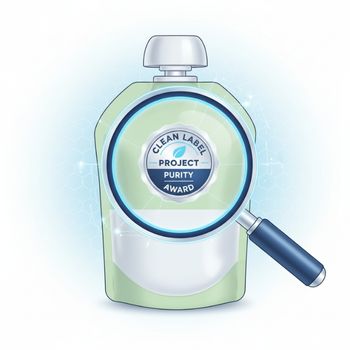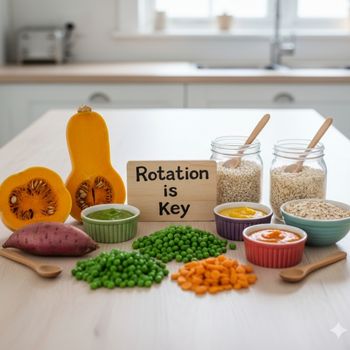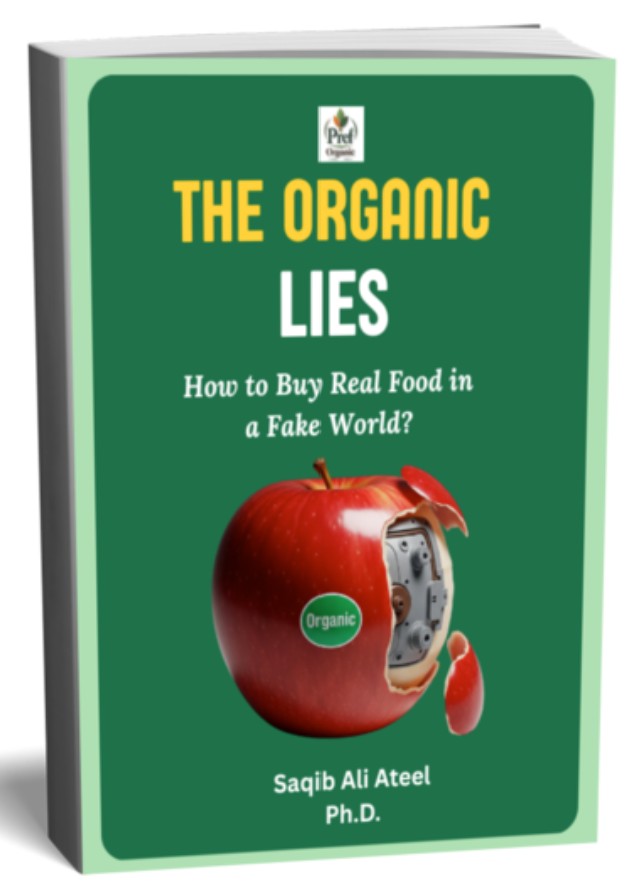The Best Organic Baby Food Brands: Your Purity & Ingredient Checklist
You made the right choice by choosing organic, believing it was the safest start for your child. But then the headlines hit, confirming that even organic baby food can contain traces of toxic heavy metals, delivering a fresh wave of parental anxiety. If you're reeling from this information overload, please know you are not alone. I've seen that same worry in my own family.
The feeling of trying to do everything right, only to face a hidden danger, is utterly overwhelming. As a PhD student in agriculture, combined with a lifetime of hands-on farming and organic gardening, my goal is to guide you through this with scientific clarity and grounded experience. We'll cut through the confusion. We’re moving beyond the general organic promise to the new gold standard: verifiable purity.
This is your actionable roadmap to finding the cleanest, most nutritionally aligned organic products on the market today.
Quick Relief: The Purest Path to Peace of Mind
If you are a busy, time-constrained parent who needs fast, actionable answers, here is the essential takeaway from our comprehensive analysis:
- The USDA Seal is the Baseline, Not the End: The USDA Organic seal is an essential first step that guarantees the process (no synthetic pesticides or GMOs), but it does not certify the purity of the final product against environmental contaminants.
- The New Gold Standard is Third-Party Testing: The ultimate tool for true parental peace of mind is verifying purity through independent testing for heavy metals and contaminants. Look for brands that have earned the Clean Label Project Purity Award.
- Actionable Purity Checklist: Brands like Serenity Kids, Cerebelly, Once Upon a Farm, and certain lines of Beech-Nut and Gerber have proactively sought this verification, making them trustworthy options for your regular retail and Amazon shopping.
Why Purity is the Ultimate Goal (Beyond Organic)
For a discerning parent—the "proactive protector"—understanding the difference between the organic process and product purity is the key to confidence.
The Critical Limitation of the USDA Organic Seal

Choosing organic was a powerful, positive decision. Growing up on a farm, I learned that soil health is nutritional wealth, and organic farming is about building healthy, living soil. The USDA Organic seal is a legally enforced promise that the food was grown without intentionally adding most synthetic pesticides, GMOs, or sewage sludge. This seal is the crucial baseline.
Here’s the rub: The USDA Organic program certifies the farming process. It ensures no prohibited chemicals have been added to the soil. It was never designed to certify the purity of the final product against contaminants already in the environment.
Think of our farmland like an old, deeply stained piece of concrete. Organic farming stops the new spills, but it can't magically lift the decades of leaded gasoline residue, industrial fallout, or historical pesticides containing arsenic. These elements are now part of the soil itself. When a plant draws up water and nutrients, it can also absorb trace amounts of these heavy metals. This is the trust gap: the process is pure, but the shared environment is not.
The Elephant in the Pantry: Why Heavy Metals Exist 🧠
The presence of heavy metals like arsenic, lead, and cadmium is not an "organic versus conventional" problem. It is a food system problem, rooted in environmental contamination that affects all farming.
These metals are naturally occurring in the Earth's crust, but human activities—like industrial waste and old leaded gasoline—have drastically increased their concentrations in our soil and water. My research as a PhD scholar suggests your instinct to be fiercely protective of your baby is scientifically correct, as their rapidly developing body is uniquely vulnerable.
Babies are uniquely vulnerable to these toxins because:
- Higher Absorption: Their small, permeable digestive systems absorb more toxins relative to their size.
- Proportional Intake: They consume significantly more food per pound of body weight than an adult, leading to higher proportional exposure.
- Immature Systems: Their developing systems are less efficient at detoxification and flushing these substances out.
The solution isn't to stop feeding healthy foods, but to demand verification that brands are mitigating this environmental legacy.
The New Gold Standard: The Clean Label Project ✨
If the USDA seal certifies the process, how do we find the truest purity? The answer is transparency and independent verification of the final product.
What is the Clean Label Project (CLP)?

The Clean Label Project (CLP) is a third-party, non-profit organization that fundamentally changes the game by providing the actionable, verifiable proof parents need. Their mission is to bring truth to labeling by testing for contaminants that brands aren't required to list.
What my research brain respects most is their rigorous methodology:
1. They Shop Like You: The CLP buys products off the shelf at stores, simulating the consumer experience and ensuring they test the exact same jar that ends up in your kitchen.
2. Gold-Standard Testing: They send products to independent, ISO-accredited labs to test for over 400 contaminants, including toxic heavy metals (Arsenic, Cadmium, Lead, Mercury), pesticide residues, and plasticizers (BPA, Phthalates).
3. The Purity Award: This award is given only to products that test in the top 33% of their category, meaning they demonstrate the lowest levels of contaminants among their competitors.
For a time-crunched parent, the CLP Purity Award is the clear, easy-to-spot signal of a brand's deep commitment to safety. It is the necessary second step after checking for the USDA organic seal.
Your Purity-Verified Brand Checklist (Retail &
E-commerce)
To help you shop with confidence, here is a quick guide to best organic baby food brands that have proactively sought third-party verification, making them trustworthy options for your grocery run or next Amazon order.
Comparison: Top Organic Baby Food Brands 👶🥕
| Brand 🏷️ | Core Mission / Focus 🎯 | Key Purity Verification (Trust Signal) ✅ | Why is it Unique? ✨ |
|---|---|---|---|
| Serenity Kids | Savory-focused, high in healthy fats, and ethically sourced meats. Avoids high-sugar fruits. 🥑🥩 | Clean Label Project Purity Award. Tests for over 200 contaminants (heavy metals, glyphosate, plastics). 🔬 | Pioneer in fostering a low-sugar flavor palette. Great for high-protein, high-fat, or paleo diets. 🍖 |
| Cerebelly | Designed by a neurosurgeon to support key brain development milestones. Emphasizes micronutrient-rich ingredients. 🧠 | Clean Label Project Purity Award. Demonstrates high transparency by sharing all test results by lot code. 📑 | Excellent choice for parents who want nutrition specifically matched to developmental stages and batch-level purity publishing. ⭐️ |
| Once Upon a Farm | Cold-pressed organic purees and meals. Prioritizes refrigeration and cold-pressure processing for maximum freshness. ❄️ | Clean Label Project Purity Award and Pesticide-Free Certification. First baby/kids' food brand to receive the Purity Award. 🏆 | Maximum freshness and nutrient retention due to the cold-pressed process. Ideal hybrid option (DTC/Amazon). 🍓 |
| Gerber Organic | Comprehensive nutrition across all milestones (Sitter, Crawler, Toddler). Focus on the trusted legacy brand. 👶 | Most Clean Label Project certifications are for any baby food brand. Products must meet high standards for quality and safety. 🔒 | Highly accessible legacy brand; offers a verifiable third-party layer of assurance against contaminants and heavy metals. 🛒 |
| Earth's Best | Comprehensive, certified organic brand that sells formula, purees, finger foods, and snacks. 🍎 | Certified organic and Non-GMO. Widely trusted for reliable organic ingredients across a variety of formats. 🌱 | Reliable choice for quick and widespread Organic Baby Food Delivered via retail partners like Amazon. 🚚 |
| Beech-Nut | Trusted legacy brand known for its commitment to natural and organic lines. 🌳 | Many products have received the Clean Label Project Purity Award. Partners with CLP for independent, third-party protection. 🛡️ | Provides a high level of quality assurance via third-party testing within an accessible, established brand framework. 👍 |
Affiliate Disclaimer: The links provided for these brands are Amazon affiliate links. We may earn a small commission if you make a purchase after clicking these links.
Your Action Plan: Feeding for Health & Safety 💪

Starting solids is a joyful milestone! The best strategies for minimizing contaminant exposure and building a healthy gut are one and the same:
DIVERSITY.
My hands-on experience shows that by personally tasting the products alongside the children, we can assess the integrity and flavor profile, moving the comparison beyond simple marketing language. The goal here is to nourish your baby's inner garden. Introducing solids is the first big planting day. Every new food is a new seed that trains the immune system and builds resilience.
1. Smart Rotation for High-Risk Foods (The Farmer's
Insight)
Some plants naturally absorb metals more efficiently from the soil. Our goal is not to eliminate healthy foods, but to implement a smart strategy of diversity and rotation.
⚠️ High-Risk Foods & The Rotation Solution 🔄
Protect your little one by minimizing exposure to heavy metals. Variety is the safest approach.
| 🍎 High-Risk Food | 🔬 Why It's Risky | ✅ Action Plan: Rotation is Key |
|---|---|---|
| 🍚 Rice | A known arsenic accumulator due to how it's grown in water-flooded fields, making it a high-concern food. | Vary the Grains: Avoid reliance on rice cereal and puffs. Rotate through iron-fortified oat, barley, and multigrain options to limit cumulative arsenic exposure. |
| 🥔 Root Vegetables | Carrots and sweet potatoes are nutritional powerhouses, but they grow in the soil, absorbing lead and cadmium more readily than others. | Embrace the Rainbow: Rotate these with surface-growing vegetables like avocado, squash, green beans, and peas. Scrub and peel root veggies when you do serve them. |
| 🍎 Fruit Juices | Apple and grape juices have shown concerning levels of inorganic arsenic and lead, likely from contamination during processing. | Water is Best: Avoid juice altogether for infants. For toddlers, offer whole or cut-up fruit instead of juice, which retains fiber and is significantly lower in heavy metals. Limit juice intake severely. |
| 🥨 Puffs & Snacks | Many are made with rice flour or other ingredients that are susceptible to heavy metal accumulation. They offer little nutritional value. | Choose Alternatives: Substitute with low-risk finger foods like oatmeal, thinly sliced cheese, ripe avocado, or steamed pieces of green beans. Focus on whole foods. |
| 💡 Remember: The key is moderation and diversity. No single food should dominate a child's diet. | ||
2. Prioritize Fresh & Cold-Pressed
If you can, make your own purees from fresh produce. If not, choose brands like Once Upon a Farm that prioritize refrigeration and cold-pressure processing to ensure maximum freshness and nutrient retention.
3. Seek Clean Label Purity for Key Products
When shopping for products with ingredients known to be high-risk (like rice or grain-based puffs), rely heavily on brands that have specifically earned the Clean Label Project Purity Award for those items. This is the higher standard that moves beyond the organic process to the purity of the final product.
Summary: Transforming Fear into Confidence
The world of organic baby food doesn't have to be a minefield. You now understand the promise and the limitation of the USDA Organic seal, and you have a clear, scientific understanding of the environmental heavy metals challenge.
Most importantly, you have a powerful, actionable tool: the Clean Label Project Purity Award. By focusing on diversity and seeking out brands that provide third-party verification, you are building a foundation of health and providing a protective barrier for your child.
Choosing what to feed your baby is a profound act of love. Shop smart, focus on variety, and know that you are making informed choices that will nourish your child for a lifetime.
Take the relief, use this guide, and enjoy the Parental Peace of Mind.
